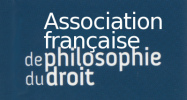Paper's abstract
Claudine
Junien,
Plea for prevention
the new paradigm of the developmental origins of health and diseases (DOHaD): epigenetics, genetics and environment
Approaches to tackling the scourge of chronic diseases that are increasing throughout the world are proving unsuccessful and very expensive. It is now possible to correct these alarming figures and to consider effective prevention by adopting the new paradigm of the developmental origins of health and diseases (DOHaD), provided that we intervene early by acting on risk and not when the disease has already appeared. It is widely recognized thanks to epidemiological studies in humans and animal experiments. The influences of environmental factors - nutrition, stress, psycho-affective, toxic, bacterial, and physical - on epigenetic processes represent a revolution. Indeed, epigenetic modifications retain the memory of the effects of the environmental factors to which an individual is subjected throughout his life. A crucial period is the early, pre- and postnatal development, the 1000 days. Crucial because the epigenome is particularly sensitive to the effects of environment, and also because the individual builds his or her health capital to respond more or less well to the vagaries of life. In addition, there is a growing interest in the existence of non-genetic, non-cultural mechanisms that transfer the memory of exposure to various parental environments and condition the responsiveness of subsequent generations to different environments over the course of their lives. The idea that epigenetic marks which have not been erased during the reprogramming phases are currently very much in vogue or even erroneously considered to have been acquired despite the scarcity of conclusive examples. However, fundamental questions remain about the nature, roles and impact of epigenetic marks and mechanisms, non-coding RNAs or other mecha-nisms and their persistence over generations. A model integrating these different systems, their interactions with the environment and developmental windows of sensitivity according to the sex of the parent and the child remains to be built. Based on the malleability of the underlying epigenetic mechanisms, the reversibility of environmental brands opens up new perspectives. However how the factors imparting increased susceptibility or resilience to disease development act and influence epigenetic mechanisms remains to be established. If the memory of exposure to environmental factors is indeed transmissible, the main challenge for the individual, and especially for the public authorities, is to be able to avoid those who entail risks for the offspring. These data may shift the cursor from health care responsibilities, from the private sphere to the socio-geographico-political sphere.
Key Words : prevention environment genetics
t. 59, 2017: p. 53+65
